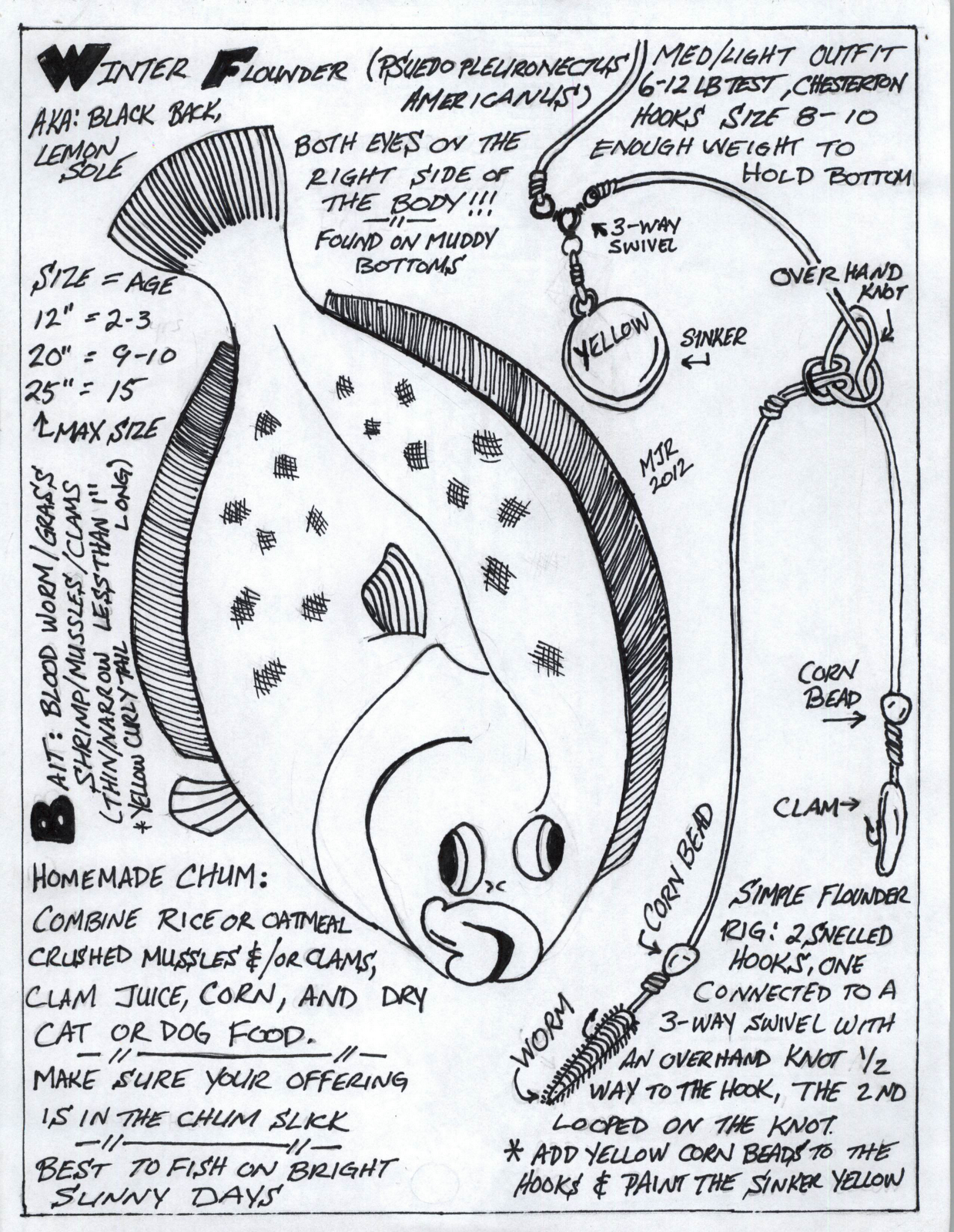

Langan’s research found that sea robins spend nearly three more months in Narragansett Bay annually than they did 60 years ago. Young flounder are especially vulnerable to striped sea robins, bottom-dwellers that swoop around on winglike pectoral fins and vacuum prey from the sand. As Rhode Island’s waters have warmed, the populations of predators such as comb jellies and shrimp have spiked, exposing flounder eggs and larvae to more hungry mouths. Juvenile flounder confront two crises, both temperature related. When Langan examined historical trawl survey data, he found that reducing fishing pressure hadn’t brought back winter flounder for a simple reason: their young were dying before they got big enough to catch. “Catching microscopic larval fish while it’s snowing is super fun,” he recalls unironically. In 2017, Langan received a grant to investigate a seemingly straightforward question: what would it take to bring winter flounder back? He and his colleagues trawled Narragansett Bay in late winter, scooping up flounder larvae in a windsock-shaped plankton net. “The climate of the 1970s is not our current climate. “It’s not that we can’t get more winter flounder, it’s that we can’t get 1980 levels of winter flounder,” says Joe Langan, a fisheries oceanographer who conducted his doctoral research on winter flounder at the University of Rhode Island.
Winter flounder series#
It also forces us to confront a series of disturbing questions: What if winter flounder and other climate-stressed fisheries never bounce back? Do we keep trying to rebuild them, even if conditions make their recovery unlikely? Or do we lower our expectations-perhaps even give up altogether? This is a troubling realization, since global warming, unlike overfishing, isn’t a problem that fisheries managers can rectify. Coastal ecosystems along the New England seaboard have been upended by rising ocean temperatures, none more so than Narragansett Bay, where waters have warmed by 1.7 ☌ over the past century. Today, however, a growing body of evidence implicates a familiar culprit: climate change. “There’s so few of them that recreational fishing is basically closed,” Hittinger says.įor years, winter flounder’s stagnancy was something of a mystery. Now the southern New England population hovers at just 30 percent of government targets, and catches in Narragansett Bay are a measly one one-hundredth of their historical apex. Managers took the logical step of restricting harvest, but winter flounder never recovered. In the late 1980s, though, the species began to buckle beneath the weight of overfishing. Winter flounder, so named because they spawn between December and April, were a valuable commercial species and a dinnertime staple anglers said that Narragansett Bay was practically paved with the mottled flatfish. “They’d catch flounder one after the other.”įishermen around Rhode Island shared Hittinger’s passion. “They’d put the rod in the holder, and by the time they’d come back, they’d have a fish on the other end,” says Hittinger, vice president of the Rhode Island Saltwater Anglers Association.

He and the kids chummed the water with rabbit feed and lowered hooks baited with clam worms, then ducked into the boat’s cabin to warm their bellies with hot chocolate. On many March days, he anchored his six-meter boat, Ermala-named for his three children, Eric, Mark, and Lauren-in a sheltered cove in Narragansett Bay, the estuary off Rhode Island’s southeastern coast. In the 1980s, Rich Hittinger’s favorite rite of early spring was chasing winter flounder. Is it better to let them go? Authored byĪug| 1,200 words, about 6 minutes Share this article Photo by Stephen Vincent/Alamy Stock Photo When Is It Time to Give Up on Doomed Fisheries? Climate change means that Rhode Island’s winter flounder might never recover. But for some species, the conditions they once thrived in are gone-possibly for good. In the United States, conservation targets require fisheries managers to bring fish populations back to historical levels.


 0 kommentar(er)
0 kommentar(er)
